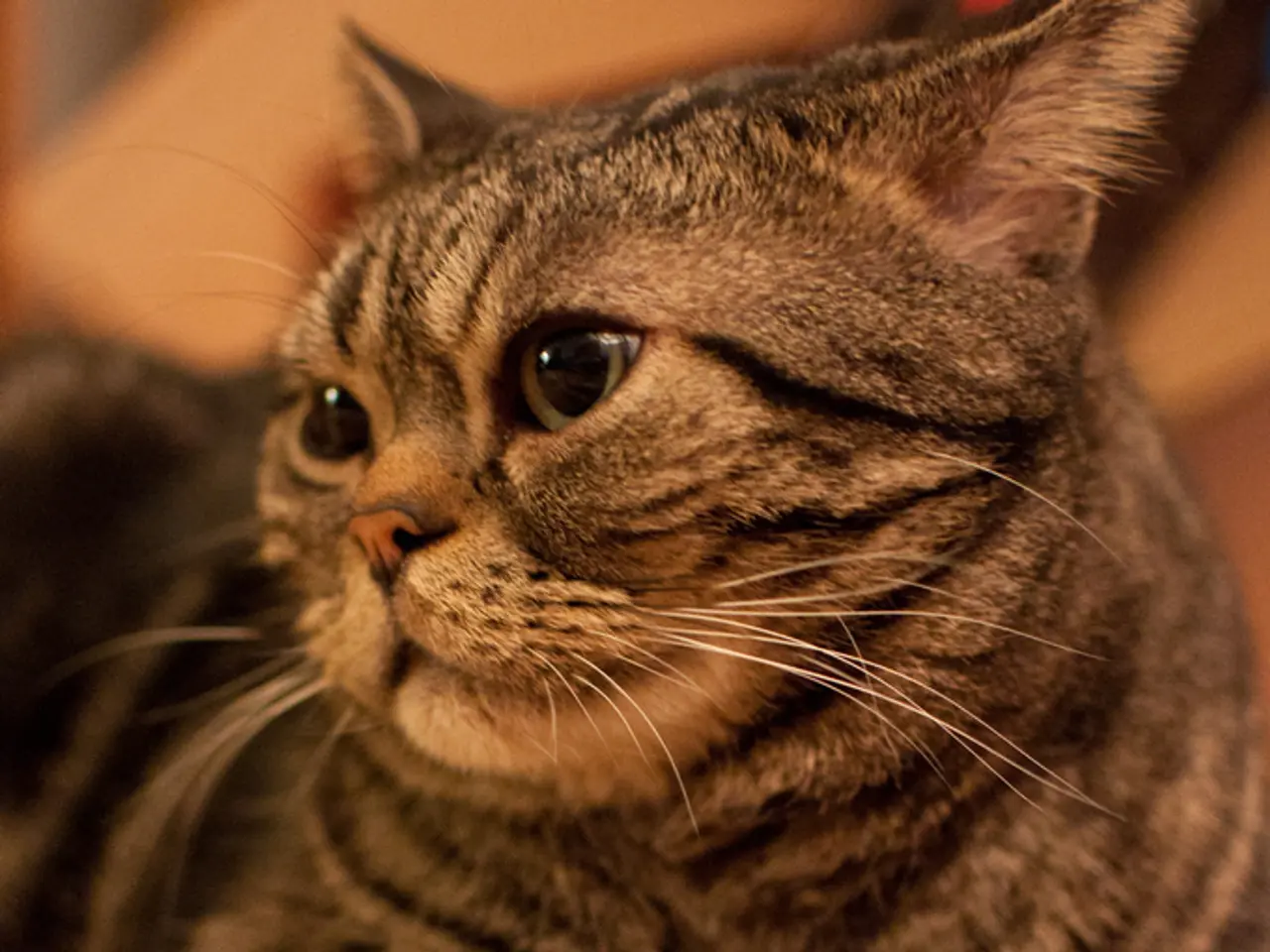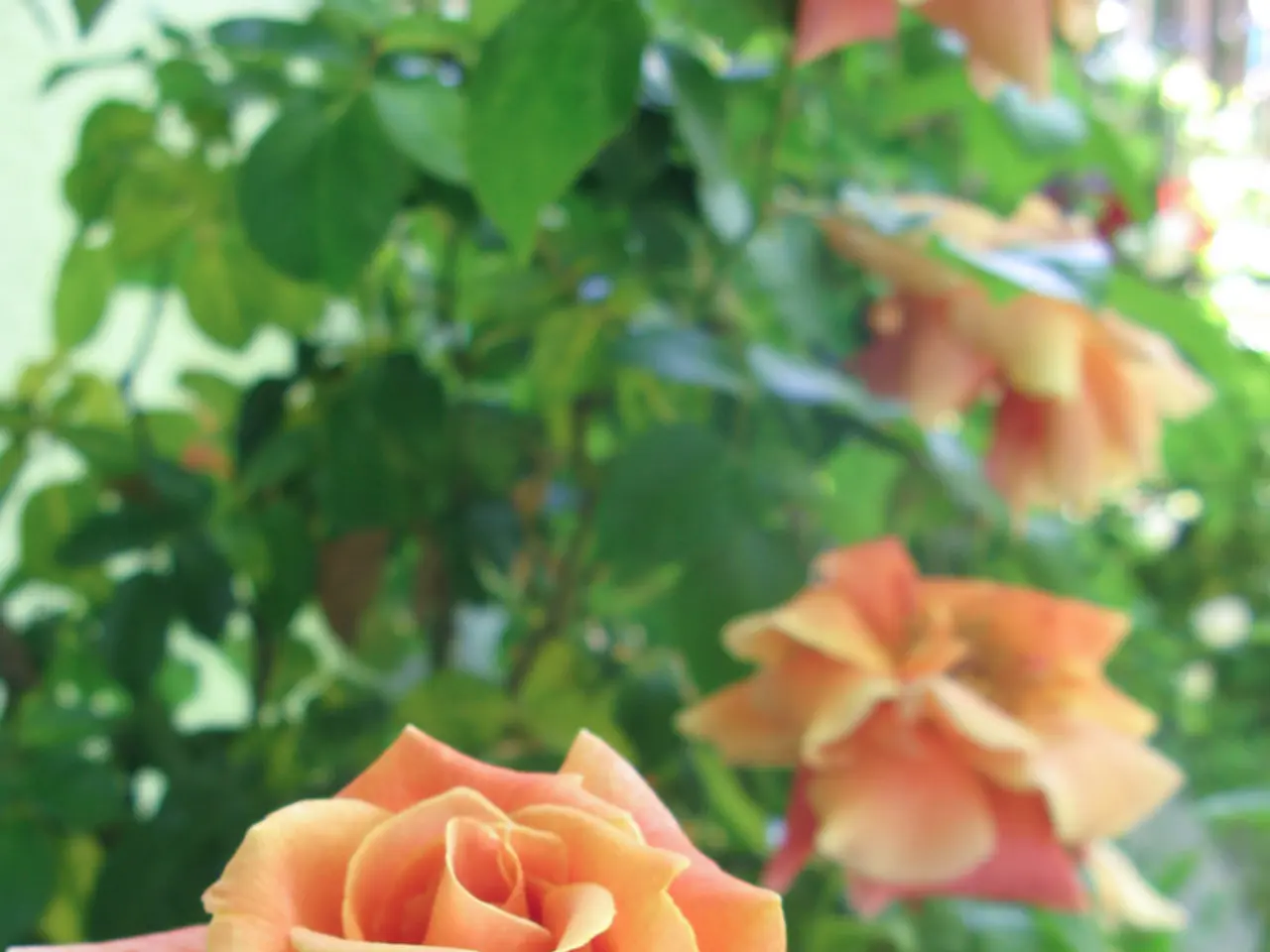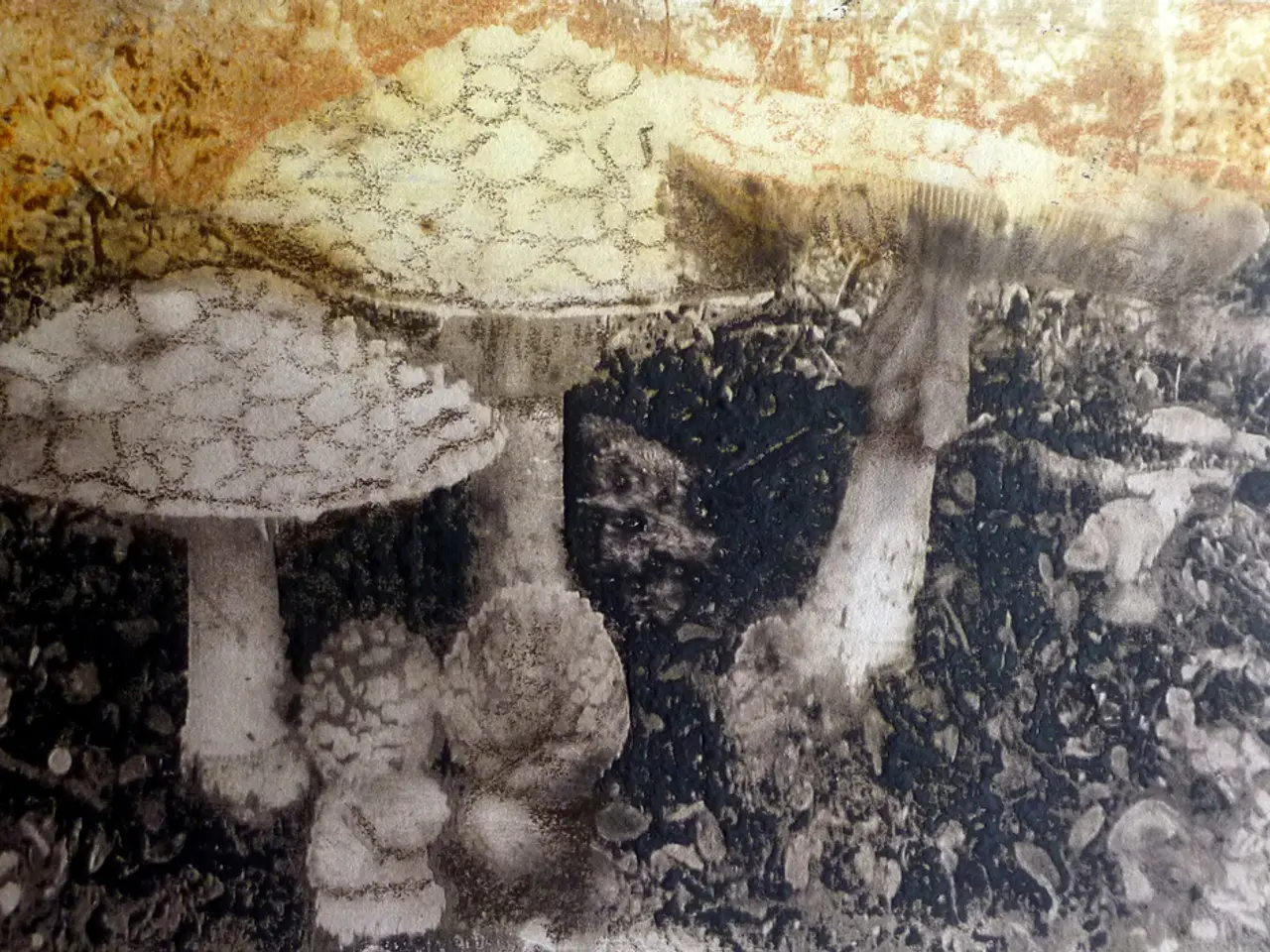Revive Cyanotype Photography, a 19th-century artistic technique, infused with a contemporary gardening perspective, by artist Sophie Cook.
In the heart of Derbyshire, Sophie Cook, a horticulturally trained cyanotype artist, is creating a stir with her unique botanical pieces. Using the Victorian art of cyanotype photography, Sophie combines her passion for plants and her artistic flair to produce striking works of art that capture the beauty of nature.
The process of creating a cyanotype begins with treating watercolour paper with iron salts, which turns it lime green. After drying, one or more pressed plants are carefully arranged on the treated paper, which is then exposed to bright sunshine before washing with water. The result is a stunning blue and white image of the botanical elements, a process that can take several minutes to hours depending on the intensity of sunlight.
Sophie finishes each cyanotype with touches of metallic gold paint, adding a touch of elegance to her already captivating pieces. Lunaria annua and poppies are among the plants that Sophie uses in her cyanotypes, although her Derbyshire location might inspire her to incorporate local flora into her work.
Sophie's relaxed approach to gardening, a departure from her professional days as assistant nursery manager at Great Dixter from 2019 to 2022, has resulted in an increase in observed invertebrates. This more hands-off approach allows her garden to thrive, providing a rich source of botanicals for her art.
Sophie's ambition is to create larger-scale statement pieces that showcase a garden through the seasons, allowing her to explore new plants and planting combinations. She can be found exhibiting and selling her work at plant-based locations such as the RHS Flower Show Wentworth Woodhouse and the craft fair at RHS Garden Hyde Hall.
For those interested in learning more about Sophie's work, her website, blueandgoldbotanics.co.uk, is a treasure trove of information. Sophie also creates bookmarks and sells them alongside her larger cyanotypes.
In addition to her art, Sophie edits nature by glueing back seeds from Lunaria annua when they shed their outer layers. This act of conservation is a testament to Sophie's dedication to preserving and celebrating the beauty of the natural world.
Sophie first discovered the cyanotype technique during her art foundation course in Nottingham 20 years ago. Since then, she has honed her skills and developed a unique style that is both captivating and thought-provoking. With her botanical cyanotypes, Sophie Cook is not just creating art, but also fostering a deeper connection between people and the plants that surround them.
- Sophie Cook's botanical cyanotypes are created from pressed plants carefully arranged on treated watercolor paper, exposing it to sunlight, and washing with water to reveal stunning blue and white images.
- Sourcing inspiration from her Derbyshire location, Sophie Cook uses a variety of plants such as Lunaria annua and poppies in her cyanotypes, and may also incorporate local flora into her work.
- In her more relaxed approach to gardening, Sophie Cook has noticed an increase in invertebrates and allows her garden to thrive, creating a rich source of botanicals for her art.
- Sophie Cook's ambition is to create larger-scale statement pieces that showcase a garden through the seasons, exploring new plants and planting combinations. Her work can be found exhibited and for sale at places like the RHS Flower Show Wentworth Woodhouse and the craft fair at RHS Garden Hyde Hall.
- Beyond her art, Sophie Cook practices conservation by gluing back seeds from Lunaria annua when they shed their outer layers, demonstrating her commitment to preserving and celebrating the beauty of the natural world.




